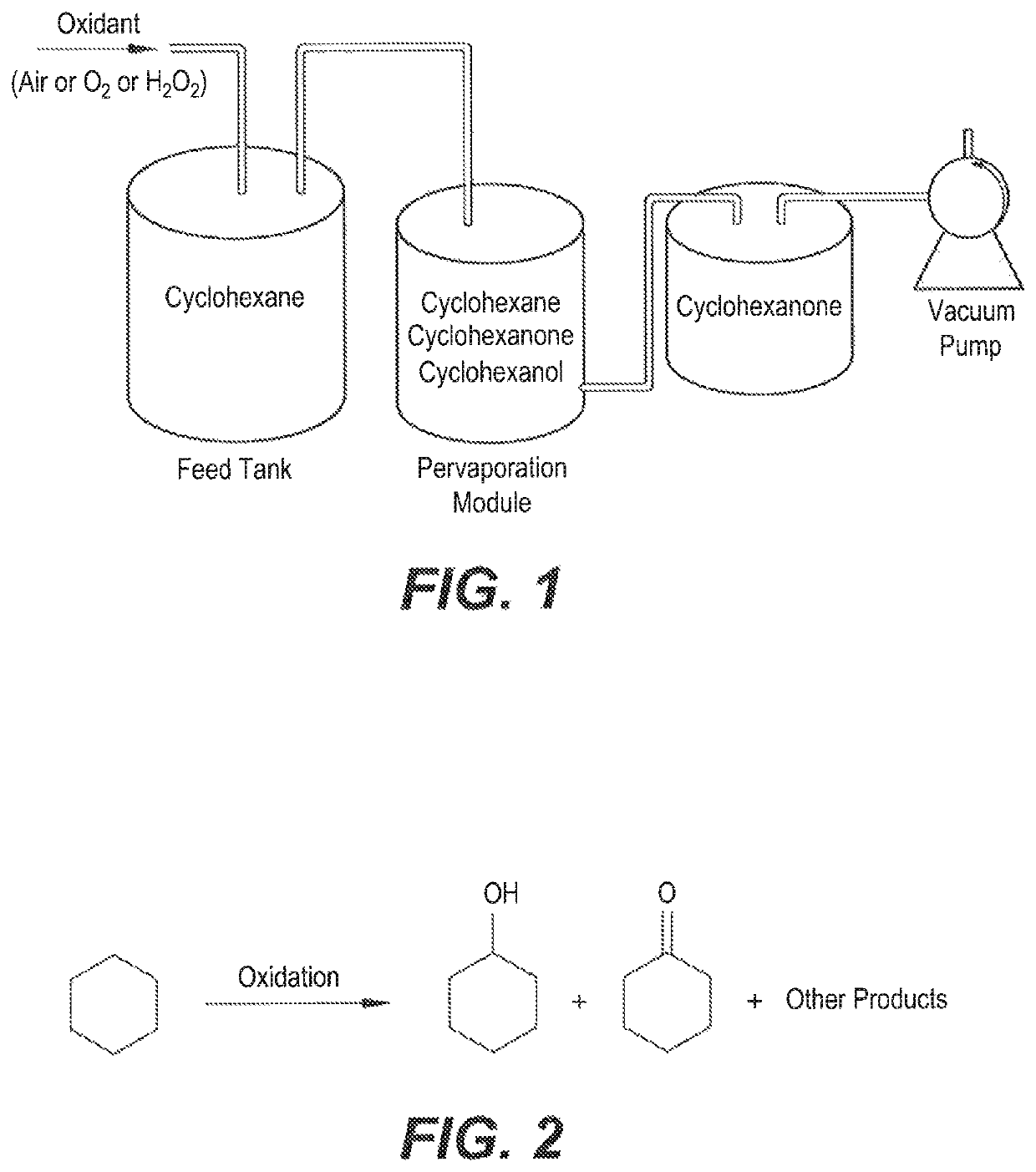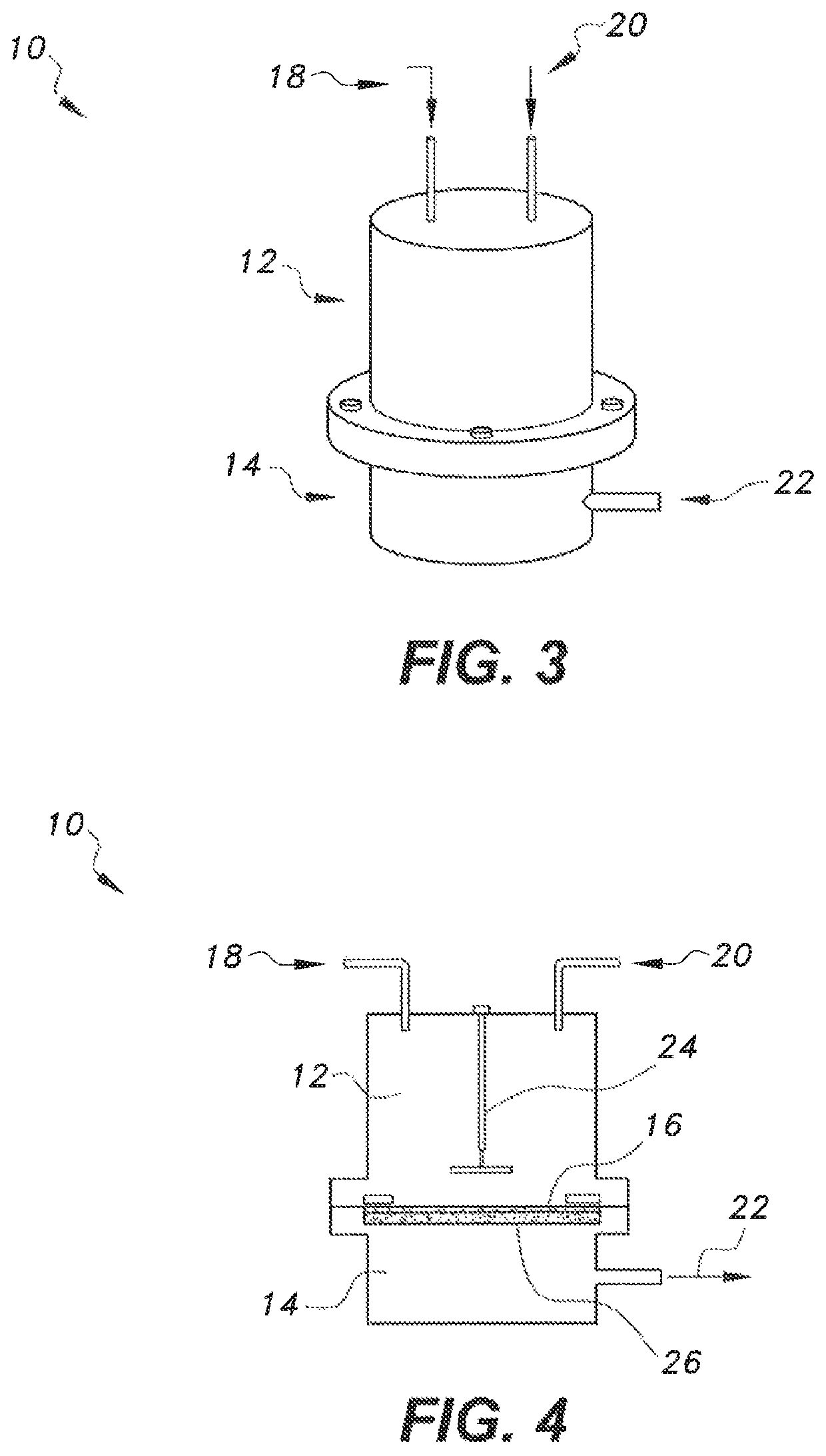Method of synthesizing cyclohexanone
- Summary
- Abstract
- Description
- Claims
- Application Information
AI Technical Summary
Benefits of technology
Problems solved by technology
Method used
Image
Examples
example 1
Synthesis of Poly(Styrene-Maleic anhydride-Dihydropyrane) membrane
[0023]The poly(styrene-maleic anhydride-dihydropyrane) membrane was synthesized by cationic polymerization of a mixture of styrene, maleic and dihydropyrane monomers as described below. The polymerization was catalyzed by heteropoly acid catalysts under mild reaction conditions.
[0024]4.5 grams of maleic anhydride was dissolved in 5 mL of acetone to form a mixture. Then, 5 ml of styrene was added to the mixture, followed by addition of 5 ml of 2,3-dihydro-4H-pyran. This mixture was mixed to homogeneity by heating at 60° C. Then, 0.25 g of H3PW2O40 (or any other heteropoly acid) catalyst was added to the heated mixture. Heating was continued at 60° C. for 2 hours until a product was formed. The product was collected in methanol, then refrigerated overnight. The polymer was separated and dissolved in Dimethylformamide (DMF) with addition of a few crystals of oxalic acid to facilitate dissolving. A few drops of diluted H2...
example 2
Pervaporation Procedure
[0027]Pervaporation of the cyclohexane-cyclohexanone-cyclohexanol mixture was carried out through the Poly(Styrene-Maleic anhydride-Dihydropyrane) pervaporation membrane by an ordinary pervaporation technique (FIG. 1). The membrane area was contacted with the feed solution. Details of the pervaporation cell are provided in FIGS. 3 and 4, respectively. The membrane was supported on a porous sintered stainless steel disk. Pervaporation was carried out at room temperature. The composition of permeate was determined with a gas chromatograph and it was found that it contained only cyclohexanone. Cyclohexane and cyclohexanol were rejected by the membrane.
[0028]The as-synthesized membrane showed high perm-selectivity toward cyclohexanone over the cyclohexane feed.
PUM
| Property | Measurement | Unit |
|---|---|---|
| Temperature | aaaaa | aaaaa |
| Mass | aaaaa | aaaaa |
| Volume | aaaaa | aaaaa |
Abstract
Description
Claims
Application Information
 Login to View More
Login to View More - R&D
- Intellectual Property
- Life Sciences
- Materials
- Tech Scout
- Unparalleled Data Quality
- Higher Quality Content
- 60% Fewer Hallucinations
Browse by: Latest US Patents, China's latest patents, Technical Efficacy Thesaurus, Application Domain, Technology Topic, Popular Technical Reports.
© 2025 PatSnap. All rights reserved.Legal|Privacy policy|Modern Slavery Act Transparency Statement|Sitemap|About US| Contact US: help@patsnap.com


